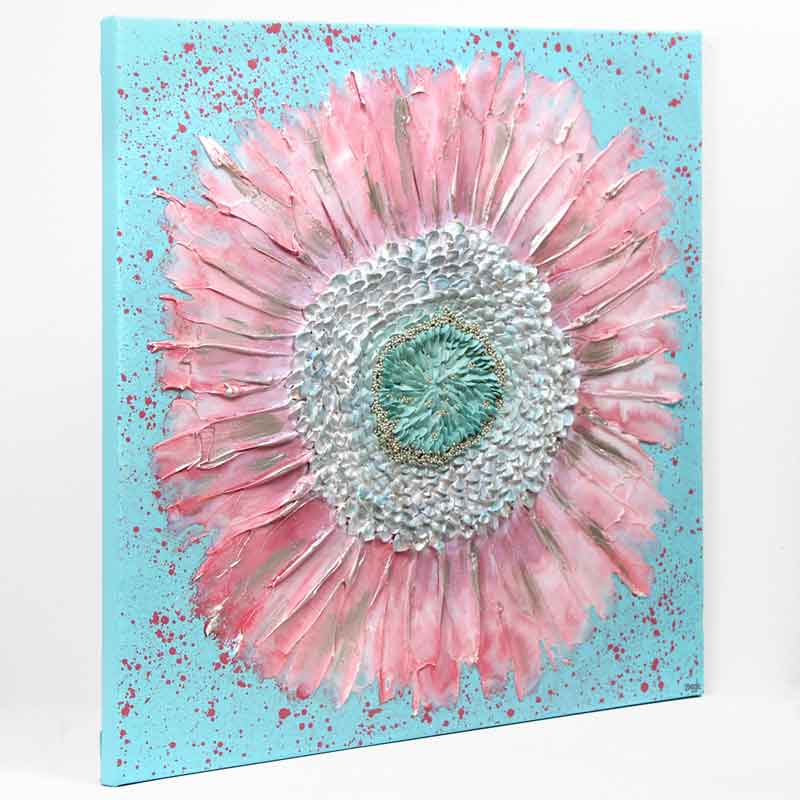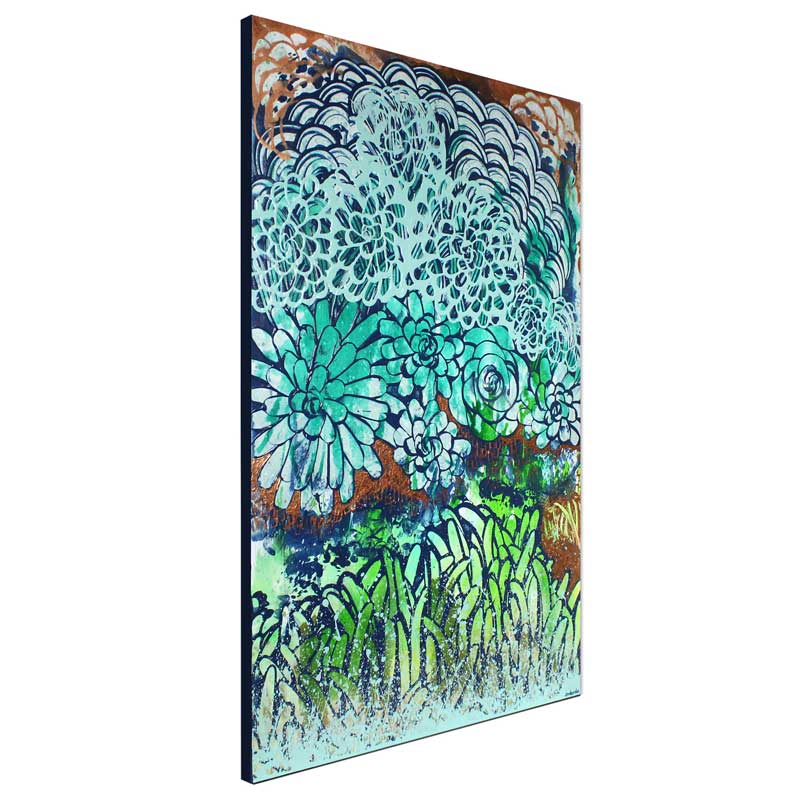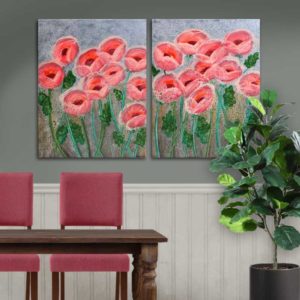Do You Have to Frame Canvas Art?
No, Amborela paintings do not need to be framed, but they can be.
Each artwork is ready to hang without a frame when it arrives at your home. The canvas has staple free sides that are painted in a coordinating color to match your painting. A sawtooth hanger is installed on the back of the lightweight canvas.
If you decide to add a frame, use the hardware that comes with the frame as it will be appropriate for the heavy weight of the frame.
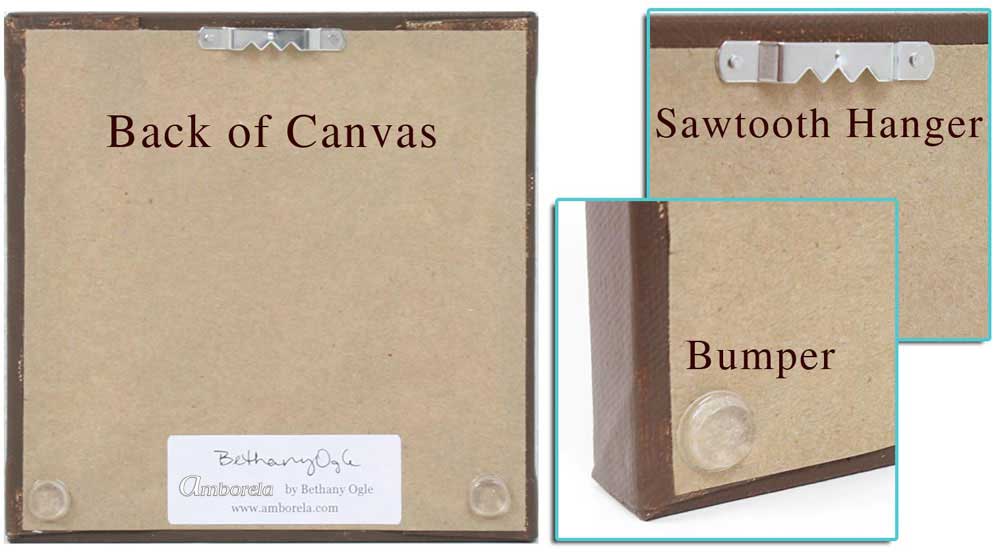
Types of Frames for Canvas Art
If you choose to frame your canvas art, you need to buy a special frame that can fit the depth of the stretched canvas. A regular frame for photos or prints will not have the depth needed to fit or attach the canvas, not even if you try to rig it.
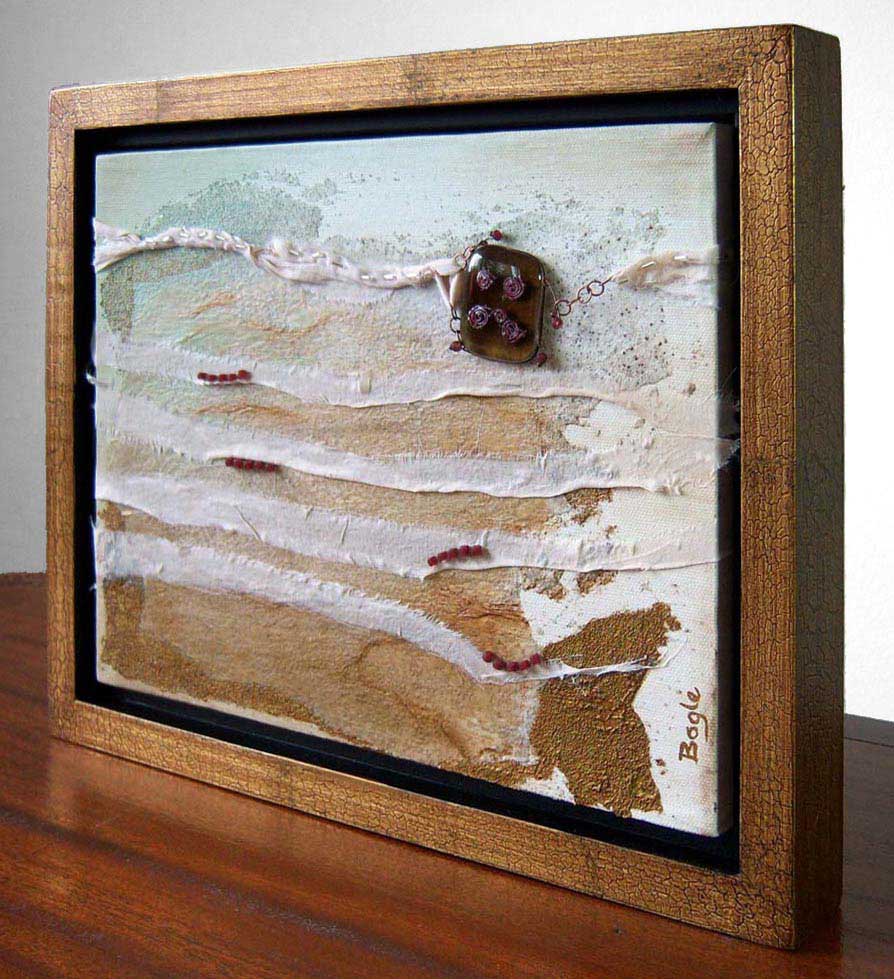
Floater Frames
These frames easily attach to the back of the canvas making your artwork appear to “float” inside the frame. Not only do these frames look amazing, they are ideal for textured artwork. The frame does not press against the front of textured artwork at all.
Floater frames allow the sides of the canvas to show. Because Amborela paintings have staple free and painted sides, they look great in a floater frame.
You will need to remove the sawtooth hanger on the back of your Amborela painting before you can screw the floater frame onto the canvas back.
Deep Profile Frames
These frames come in many profiles (depths). You will need a frame with a profile of at least 3/4″ to fit your Amborela painting.
However, your Amborela painting will not work in a deep profile frame if it has texture extending to the canvas edge. The texture prevents the canvas from sitting flush inside a frame’s rabbet (opening behind frame molding).
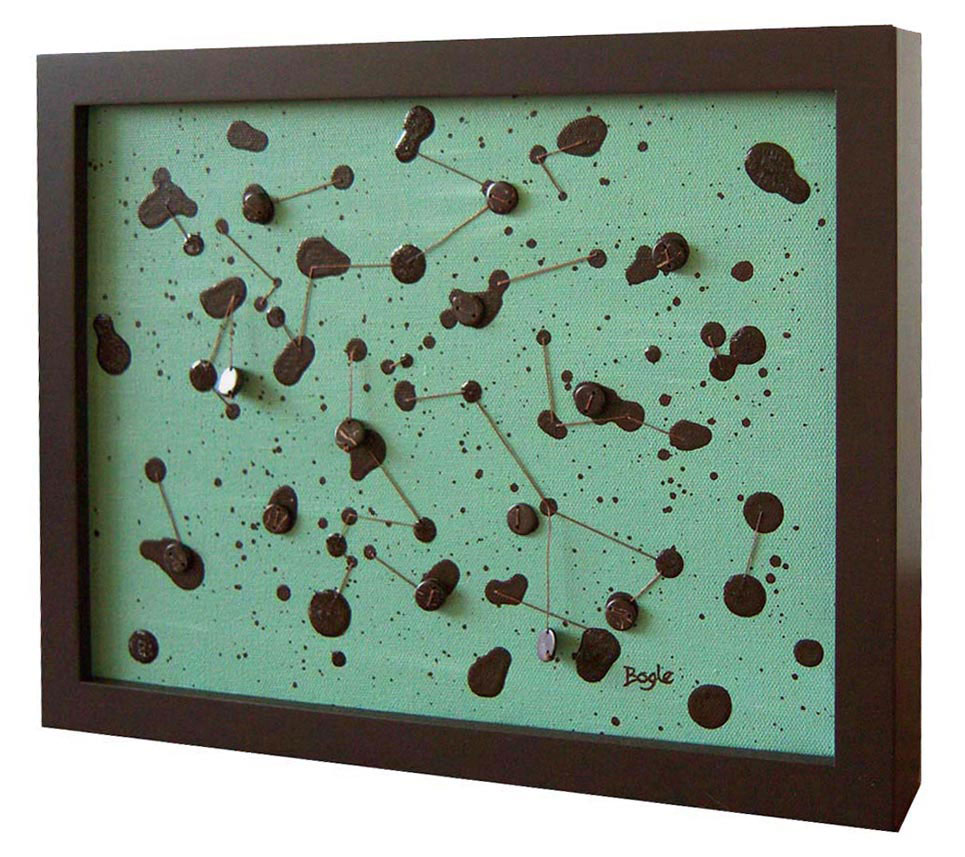
Tips for Framing Canvas Art
- Don’t use any type of glass or plastic in your frame. Glass sitting against the surface of your canvas will trap condensation inside, and damage the artwork. Your Amborela painting has been sealed with a semi-gloss finish that protects your painting; no glass needed.
- If you choose to frame a triptych (3 piece canvas) with a continuous scene like a tree, use a frame with a thin, unornamented molding. This allows the eye to complete the separated scene without distraction.
Examples of paintings that could work well in either a floater frame or a deep profile frame.
Measurement Terms For Canvas Art Frames
Frame Depth — This is the measurement of the inside depth of a frame that holds your canvas, not the outside. The depth is the maximum size the frame will hold. For example, Amborela canvases have a 3/4″ depth, and can fit in a 3/4″ depth frame, a 7/8″ depth frame or a 1 1/2″ depth frame.
Frame Dimensions — This is the measurement of the inside width and height of the frame, not the outside molding. Your frame should have the same dimensions as your canvas. For example, you will need a frame with 24″ x 20″ dimensions to fit an Amborela canvas with 24″ x 20″. If you order a deep profile frame, the molding will overlap ¼” on each edge of your canvas. For a canvas with texture, use a floater frame that does not overlap your edges.
You don’t need to frame Amborela canvas art to make a statement. Bold colors, textures, contrast, and size of artwork can work well for focal art that makes people want a closer look.



